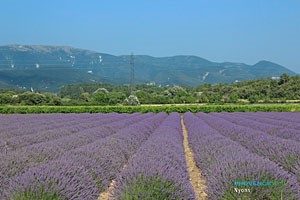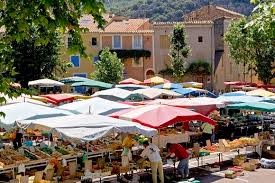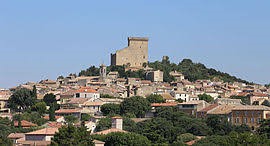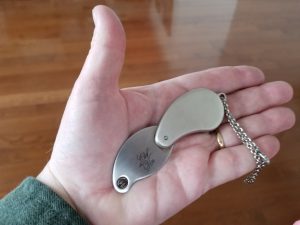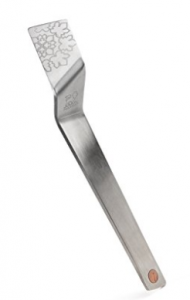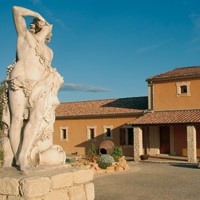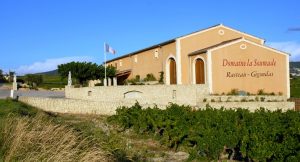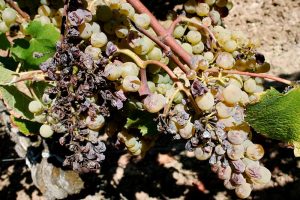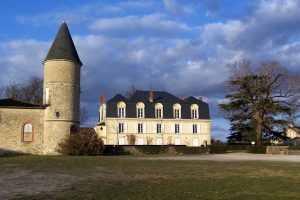Lavender field in Nyons, France . (Proto courtesy of Provenceweb.fr)
Wine regions around the world all have one thing in common: vineyards, of course. As you travel in the Wine Country in France, some have more to offer, such as historical villages, unique churches, Roman bridges, mountain views, gourmet food, farmers’ markets, pottery, art, fields of flowers, orchardsand agriculture. A sector of the southeastern part of France, called the Drôme Provençale, has all of these things and more; this is where we will take you in this article.
Market day in Nyons, France. Photo courtesy of francerevisited.com
This part of France is best known for its Rhône wines, lavender fields, but also for its apricot orchards and the famous olives grown in the small village of Nyons, where you can stop at the Cooperative for a taste of their olives and the local wines. You can drive through beautiful little villages like Sainte Cécile-les-Vignes (where we had a memorable lunch at the small hotel La Farigoule), Cairanne, Rasteau, Gigondas, Vacqueyras, Beaume-de-Venise, Châteauneuf-du-Pape (all Côte-du-Rhône villages). Then there are Orange and its Roman arena and Suze-la-Rousse with its castle, home of the Université du Vin (Wine University). Here there are laboratories and tasting rooms that are unique in Europe, offering courses in oenology and management for the wine industry. All those villages are surrounded by vineyards overlooked by mountains: the Mont Ventoux and the Dentelles de Montmirail.
The Université du Vin. Photo courtesy of Les Châteaux de la Drôme.
The village of Châteauneuf-du-Pape is the best known Rhône village, thanks to its famous and unique wines. The village itself is certainly worth visiting. You can park in the village, have a delicious lunch at an outdoor café and walk to some of the wineries in the village. Other vineyards are just a short drive from the town, where you will find Domaine Beaurenard, Domaine du Vieux Télégraphe, Château Beaucastel to name just a few of the most famous.
Châteauneuf-du-Pape, France. Photo courtesy of Wikipedia.com
This is a favorite part of France for Lucie, since she has old friends in Nyons. She knows most of the villages and can drive you around (if you ask her). Being a member of the Commanderie des Côtes du Rhône (Rhône wine society) as Chevalière (knight), she is quite knowledgeable about Rhône wines and she happens to have some connections in this part of the world, which will bring a few future articles on the subject.
Isn’t the Drôme Provençale inviting?
